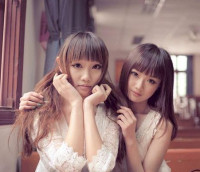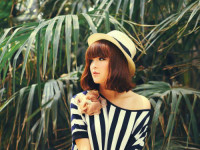新词:诈捐门 charity fraud 养眼花瓶 eye candy
来源:互联网 发布:java行业发展 编辑:程序博客网 时间:2024/05/16 11:36
从“泼墨门”到“诈捐门”,国际巨星章子怡的星途最近颇为不顺。在两个多月的沉默之后,章子怡于3月12日凌晨接受《中国日报》独家专访,详细回答捐款风波中网友提出的各种质疑。 请看《中国日报》的报道:
Zhang Ziyi has been criticized for not replying to accusations of charity fraud leveled against her. In an exclusive interview with China Daily, the internationally-celebrated Chinese actress - for the first time - answered some 100 questions, most of which involve details about the money she gave to charity or collected for her own foundation.
章子怡因一直未对“诈捐”指责做出回应而饱受批评。在接受《中国日报》独家专访时,这位国际巨星首度开口,回答了100多个问题,其中包含她所捐出的善款以及为自己名下的基金会募集资金的细节。
文中的charity fraud就是指章子怡最近身陷的“诈捐门”,指的是在charity donation/fund-raising drive(慈善募捐)中的一种欺诈行为。除了charity fraud外,生活中我们还可能遭遇tax fraud(骗税)、fake invoice fraud(假发票诈骗)、soccer fraud(假球)、electoral fraud(选举舞弊)等等不同形式的欺诈行为。
“募捐”还有一种很形象的说法,to pass round the hat,是为生活困难的人凑钱物的口语说法。例如:At the club's annual dinner we always pass round the hat to raise money for the various scholarships which the club sponsors.(在俱乐部一年一度的宴会上,我们照例要为俱乐部主办的各种奖学金募捐。)
我们都知道在演艺界通常都分“实力派”和“偶像派”。前者靠本事取胜,而后者多少都靠脸蛋或身材取胜。当然,我们也不能否认有一部分偶像和实力兼具的艺人存在。那些长相出众的艺人就难免会被人冠以“花瓶”的称呼,也可能人家也很有内容,但是大家都忙于关注他们的外表而忽视了他们的内容。这样的人在英文里叫做eye candy。
A common slang term for visually appealing persons or effects used to draw mass attention is eye candy. The implication is that they are eye-catching in a superficial fashion. Like actual "candy", this addition is seen to be neither nutritious nor substantial, but rather provides a potentially addictive appeal which will sustain the attention of a wider audience, possibly despite their better nature. 英语(论坛)俚语中通常用eye candy这个词来指代在视觉上颇具吸引力的人或者能够吸引人眼球的视觉效果,我们暂且译为“养眼花瓶”。也就是说,这些人或者视觉画面从表面来说很具有吸引力。就像candy(糖果)一样,既没有什么营养价值,也没什么实质内容,而只是能够引起更多人关注的兴趣。至于他们本质如何,则通常少人在意。 The term may have been originated by interactive videodisc, user interface designers working at INTERAC Corp. in 1983. Their work integrated text, audio, graphics, photographic images, and video into a seamless presentation. The "eye candy" referred to visually appealing images supporting the overall message. Eye candy这个词初见于1983年,是由INTERAC公司的互动视盘、用户界面设计师首先使用的。他们将文本、音频、图标、照片以及视频融合成一个整体的展示界面,而eye candy指的就是为上述整体信息提供支持的视觉画面,这些画面通常都会设计得非常吸引人眼球。 The term is also used to refer to actors or actresses perceived to have been cast primarily for the visual enjoyment of the audience. Various novels, articles, and stories have used this slang term to show a physical attraction one person has toward another. Eye candy也可以指代那些仅仅用来让观众赏心悦目的演员(通常被我们称为“花瓶”)。很多小说和文章都曾经用这个词来表现一个人的外在吸引力。
- 新词:诈捐门 charity fraud 养眼花瓶 eye candy
- Eye candy 华而不实
- Animated Eye Candy for Programmers
- 花瓶。
- 花瓶
- 新词
- Charity+ WordPress主题
- 食物养眼
- Alien Skin Eye Candy v7.x(眼睛糖果7)最新通用汉化补丁32/64位
- 花瓶插花
- 花瓶 暴力
- Candy
- Candy
- Candy
- Candy
- Candy
- Candy
- Candy
- 彻底明白Java的IO系统 & NIO
- linux 下squid文件配置说明
- 对GBK及NTF-8格式互换的讨论(自用)
- 传智播客-总结
- VS2008技巧收集
- 新词:诈捐门 charity fraud 养眼花瓶 eye candy
- [SQLServer] 临时表、表变量、 CTE
- 半导体
- 解决头文件相互包含问题的方法
- java作业04(第六章 字符串和正则表达式)
- 域名注册步骤和抢注事项
- 情景对话:Giving Compliments 赞美 Apologizing 道歉
- XML中的消息交互绑定类型
- 倔强


